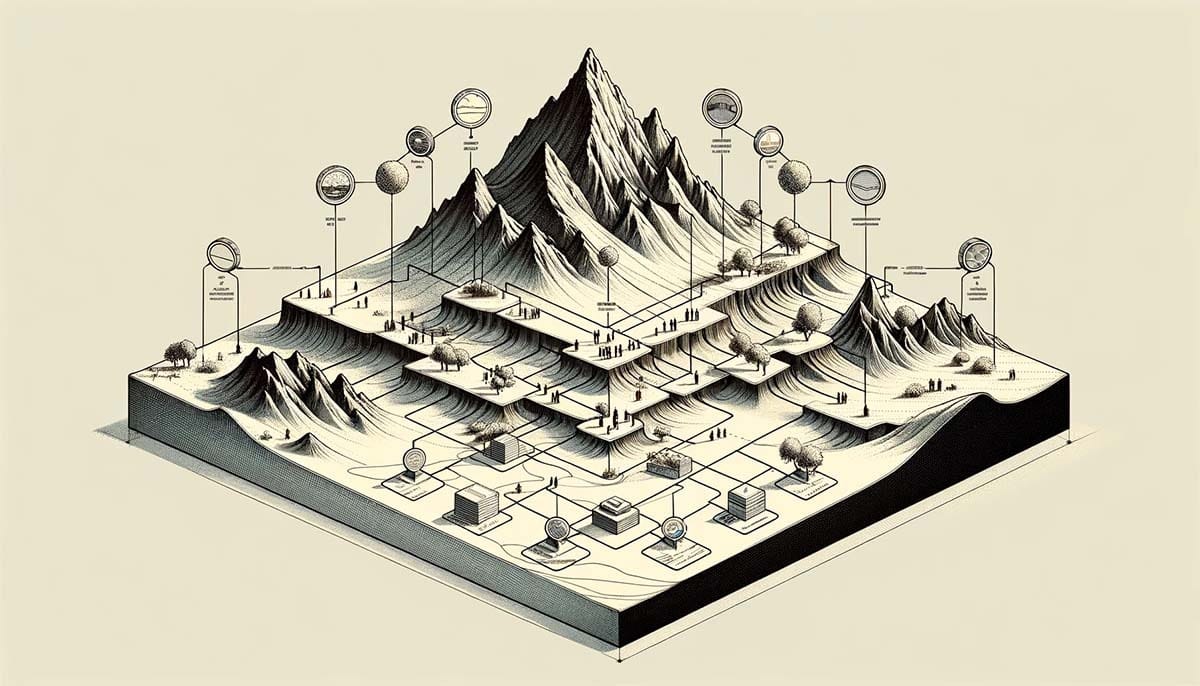The Connection Between Organizational Design, Org Structure, and Org Charts
Understand the vital connection between design, structure and org charts. This guide covers how strategic organizational designs get translated into aligned workplaces through structures which map hierarchies, collaboration, and decision-making.

Organizations come in all shapes and sizes. From massive corporations to tiny startups, how a company structures itself can impact performance, culture, and goals.
Understanding the link between organizational design, organizational structures, and org charts helps leaders build more effective and efficient workplaces.
What Is Organizational Design?
Organizational design establishes how a company positions its teams and roles to pursue objectives. It acts as a company's blueprint, providing a hierarchy that outlines authority and responsibilities. Well-designed organizations align teams and tactics to business priorities. Poor organizational design leads to confusion, redundancy, and wasted resources.
Designing an organization requires strategic decision-making around:
- Company objectives
- Operational processes
- Workforce skillsets
- Management frameworks
- Technology infrastructure
The end goal is to create an environment where employees can perform essential duties as productively as possible.
Organizational Structures Outline Designs
While organizational design takes a high-level view of a company’s aspirations and roadmap, organizational structure turns that vision into reality. An organization’s structure identifies actual, actionable alignments that allow strategic plans to operate.
Some types of organizational structures include:
- Functional Structure - Groups by common skills like IT, marketing, and finance. Silos can emerge.

- Divisional Structure - Groups by product line or geography. Can be highly responsive to local markets.
- Matrix Structure - A hybrid model that facilitates cross-functional collaboration. Can suffer from complexity.

- Flat Structure - Minimal layers between leadership and frontline. Enables adaptability but can sacrifice specialization.

The optimal structure changes based on business phase, size, and goals. However effective structures empower decision-making and execution while adhering to organizational design standards.
Org Charts Visually Map Company Structures
Once leaders define an organizational design and structure, org charts visually outline official company hierarchies. Typical org charts display positions within boxes, connected to other roles they manage or report to. Arrows point to who holds responsibility over specific functions.
Org charts help stakeholders:
- Clarify formal reporting relationships
- Spot opportunities to improve efficiency
- Identify expertise location across teams
- Map employee journey opportunities
- Onboard new staff swiftly
Simple org charts work well for smaller companies, while larger enterprises require more nuanced mapping. Chart complexity grows exponentially alongside operational and workforce expansion.
Keeping org charts updated becomes essential as structures evolve. Out-of-date charts breed confusion and hamper alignment to revised organizational designs. Dynamic charts also fuel data-based decisions about organizational transformations.
Aligning Org Design, Org Structure, and Org Charts
Organizational design, structure, and charts combine to form a company’s organizational DNA. At its best, this DNA fuels tremendous performance by enhancing stakeholder skillsets. But without alignment to strategy and culture, it can spawn bureaucracy and disengagement.
That’s why organizational leaders must vigilantly coordinate these elements:
- Auditing designs as business needs change
- Tweaking structures to speed operations
- Updating org charts to match transformations
- Surveying employees about what works and what doesn’t
Well-calibrated organizational building blocks enable both productivity and purpose.
The Connection Between People and Process
Organizational design, structure, and charts mean little without the humans underneath and processes between. Employees across every level ultimately define an organization’s culture and realize its objectives. Efficient operations and positive performance require investing in both personnel and internal procedures.
That’s why wise leaders never stop examining if company components fuel staff support and effectiveness. They forge open communication channels to regularly collect feedback. And they build adaptable systems ready to reshape around emerging needs.
Strong relationships between organizational foundations and those they serve sustain success no matter what the future holds.



